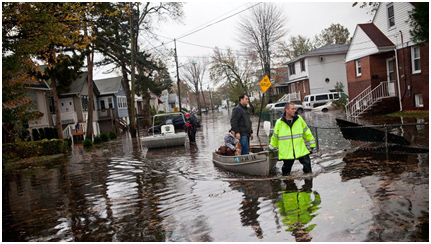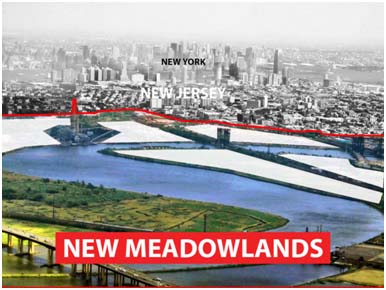New Jersey Future Blog
Outreach Plan for Hoboken Rebuild By Design Project Needs Improvement
August 4th, 2015 by Megan Callus
 On July 31, New Jersey Future submitted its official comments on the Citizen Outreach Plan portion of Rebuild By Design’s Hudson River project. The proposed plan, developed by the New Jersey Department of Environmental Protection, lays out a process for engaging the public in the design and construction of a massive $230-million flood mitigation project in Hoboken, Weehawken and Jersey City .
On July 31, New Jersey Future submitted its official comments on the Citizen Outreach Plan portion of Rebuild By Design’s Hudson River project. The proposed plan, developed by the New Jersey Department of Environmental Protection, lays out a process for engaging the public in the design and construction of a massive $230-million flood mitigation project in Hoboken, Weehawken and Jersey City .
New Jersey Future reviewed the plan carefully to see if it would offer the public an opportunity to ensure that the project is truly resilient and equitable. For example: Will the project protect people and property from future floods, even in light of projected sea-level rise? Will the project treat equally those residents who have the most difficulty responding to disasters due to their lack of access to critical resources, limited English proficiency, age, and mental or physical disabilities? And will it complement and advance other community goals for economic development, quality of life and a healthy environment?
To provide the public with a real forum in which to address these questions, we believe the Citizen Outreach Plan needs more specificity and uniformity in some places and some expanded strategies in others.
Specifically, the plan needs to be strengthened in four ways:
- The plan calls for the formation of Citizen Advisory Groups in each affected municipality, intended to ensure that a broad cross-section of constituents have a voice in project design and implementation. However, the makeup of these groups needs to be expanded beyond just those whom elected officials invite or recommend, and offer the opportunity for any interested party to volunteer;
- The plan needs to include more rigorous outreach to vulnerable and marginalized populations in the affected areas — those with limited mobility, limited proficiency in English, or who may not be reachable by standard electronic communications, for example — in order to ensure that those who will be most affected by, and who may benefit most from, the project have sufficient input into it;
- The plan needs to standardize its definition of who is included in the group of people referred to as “vulnerable populations,” and this standard definition needs to be as broad and inclusive as possible. Currently there are conflicting definitions in different parts of the plan as to who is covered, risking some groups’ exclusion from critical parts of the process;
- The plan needs to acknowledge that there are key stakeholders from outside the project area that are active and invested in the project — organizations like New Jersey Future — and it needs to expand its stakeholder list to include those organizations.
Read New Jersey Future’s full comments.















